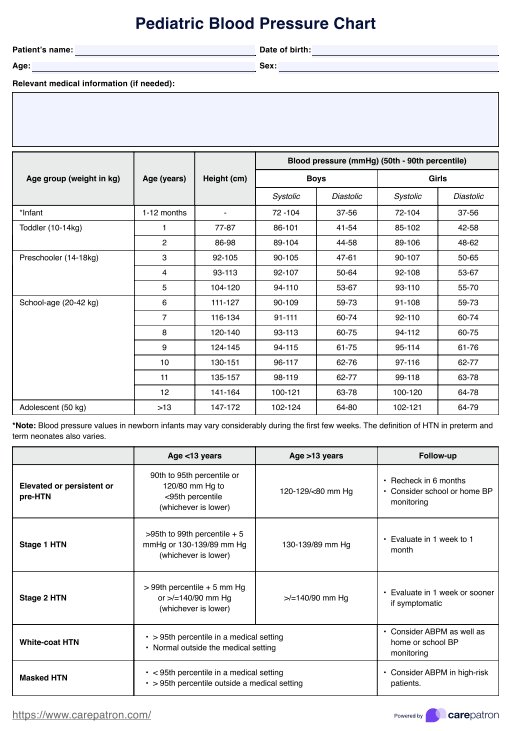Normal blood pressure in pediatrics varies based on age and sex. For children aged 1-12, normal blood pressure is typically defined as a systolic blood pressure (SBP) below the 90th percentile for age, sex, and height. For children aged 13-18, normal blood pressure is defined as less than 120/80 mmHg.

Pediatric Blood Pressure Chart
Use this Pediatric Blood Pressure Chart as a cheat sheet to monitor a pediatric patient's blood pressure!
Pediatric Blood Pressure Chart Template
Commonly asked questions
Normal vital signs for a child include a normal body temperature (98.6°F to 100.4°F), a normal pulse rate (60 to 100 beats per minute), a normal respiratory rate (12 to 20 breaths per minute), and a normal blood pressure (as defined above).
The current blood pressure guidelines for children are based on the 2017 American Academy of Pediatrics (AAP) Clinical Practice Guidelines. These guidelines are based on blood pressure and high blood pressure research studies and define normal blood pressure for children based on age, sex, and height, and provide a framework for diagnosing and managing hypertension in children.
EHR and practice management software
Get started for free
*No credit card required
Free
$0/usd
Unlimited clients
Telehealth
1GB of storage
Client portal text
Automated billing and online payments











